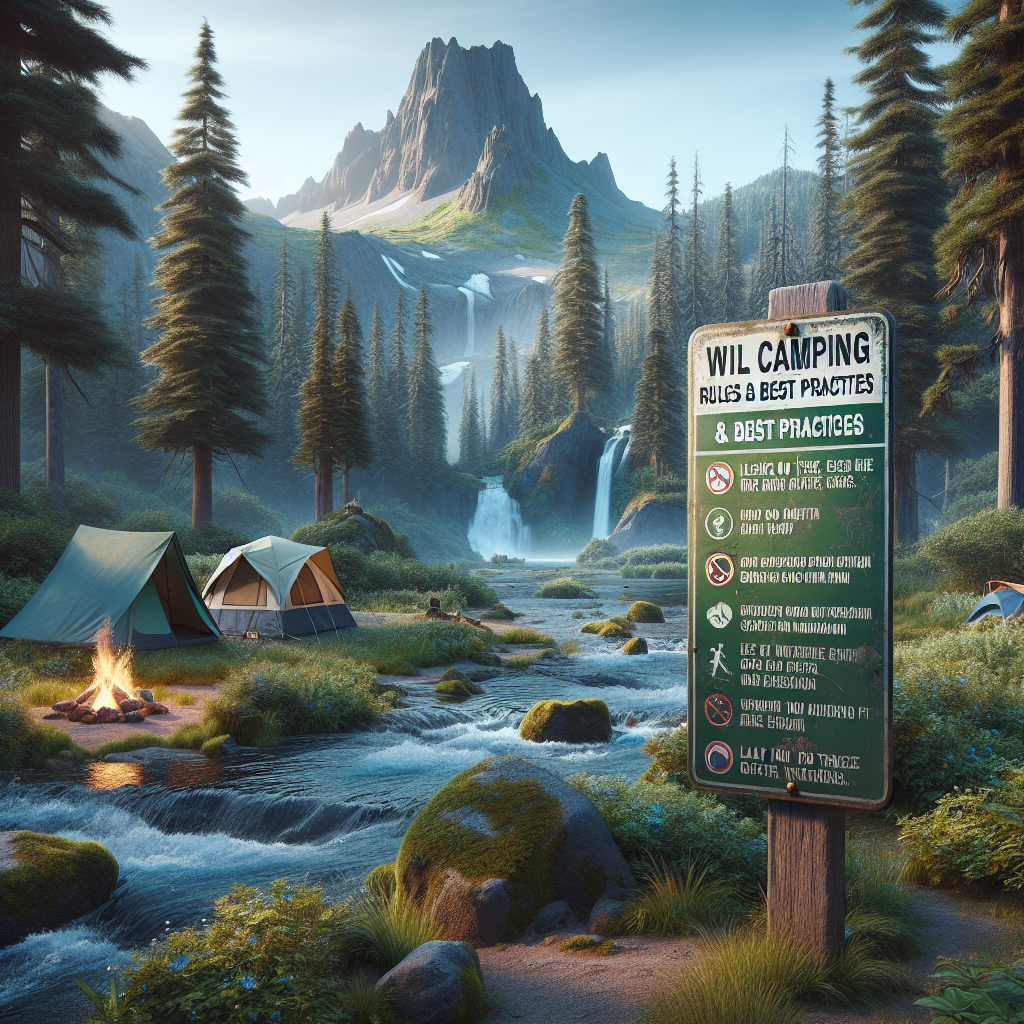Title: Your Authentic Oregon Guide: Navigating the Beauty of Wild Camping
Discovering Oregon’s Majesty on your Terms
There’s no better way to explore and appreciate Oregon than by pitching a tent nestled among the tall fir trees, alongside rushing rivers, or under the watchful eyes of the craggy Cascade Mountains. Yet, to maintain the beauty of Oregon wilderness, it’s essential to be aware of some key rules and practices associated with wild camping. Don’t fret, though! This guide is designed as a helpful yet informal resource to make sure everyone stays safe, the landscapes remain pristine, and the camping experience is downright delightful.
Choosing your Campsite: Do’s and The Don’ts
The first and most crucial decision is where to set up camp. Now, in Oregon, public lands like Siuslaw National Forest or Mount Hood National Forest are popular choices. If you prefer a desert landscape, the Steens Mountain Wilderness should be on your list. Just remember, camping is only allowed in designated campgrounds or dispersed camping areas. Look for established fire rings, flat durable surfaces, and avoid camping within 200 feet of any water source to protect the flora and fauna.
Tread Lightly: Coxing the Camper in You

Respecting the magic of Oregon begins with understanding the principle of “Leave No Trace.” Simply put, aim to leave nature as you found it, or better yet, in better shape than when you arrived. Pack out what you bring in, including all trash and food scraps. Refrain from collecting live plants – Brodiaea elegans may look charming, but they are better left untouched in their natural habitat. Always stick to established trails, even if a shortcut through those lovely Columbia lilies looks tempting.
The Fire Side Chat: Keeping it Safe
Campfires have an irreplaceable charm and warmth. Yet, the safety of everyone and the ecosystem are top priorities. In certain areas of Oregon during summer, such as the Deschutes River Trail, campfires might be prohibited due to high fire danger. Check with local ranger stations or the Oregon Department of Forestry’s website for updated restrictions. If fires are allowed, ensure they’re fully extinguished before bedtime or leaving the campsite. Remember, a good camper leaves no hot coals behind!
The Creature Talks: Safeguarding Oregon’s Wildlife
Every local loves to mention the importance of respecting Oregon’s wildlife. It’s not just about keeping a safe distance but also about securing food and cooking equipment. Despite their cute appearances, chipmunks in Mount Bachelor could ruin your camp if they get access to your food. Put food items in airtight containers and hang them from a tree, at least 10-15 feet from the ground to deter curious or hungry critters.
Weather or Not: Be Prepared
Oregon’s weather can be as diverse as its landscape. The coastal weather around Cape Lookout State Park can turn foggy as quick as a wink, while Eastern Oregon can be surprisingly cold at night, even in the summer. It’s always best to pack layers, waterproof gear, and get local weather updates to stay comfortable no matter the changes Oregon nature decides to toss your way.
Offbeat Gems: Duck the Crowd
Folks from the area love to share their secret spots. While Crater Lake or Multnomah Falls capture the spotlight, try the less trodden way to Anthony Lakes in Eastern Oregon or go kayaking at South Slough Reserve in coastal Charleston for a tranquil escape.
Winter Wonderland: As Cool as it Gets
Winter camping in Oregon is magical, especially at Trillium Lake nestled under Mt. Hood, offering fantastic views of the mountain draped in a snowy blanket. However, be aware of potential avalanche-prone areas and carry extra supplies for warmth.
Bidding Farewell
Wild camping in Oregon is not just about spending a night under the stars. It’s an immersive love affair with nature. Get friendly with the squirrels, whisper with the wind and listen to the rustling leaves soundtracking your adventure. Breathe in the sweet air of Tillamook Forest, and let the cool waters of the Rogue River caress your spirit.
Wild camping rules might seem overwhelming at first, but they’re really just a way of saying “Thanks” to nature for all it provides. Have a fantastic time exploring, Tread lightly and remember these nuggets of advice as you set out on your Oregon wild camping adventure. It’s just like exploring with an old friend, knowing they’ve got your back and wanting you to have the best, most authentic experience possible. So grab your gear, head out, and let the love story with Oregon unfurl its beautiful chapters!
